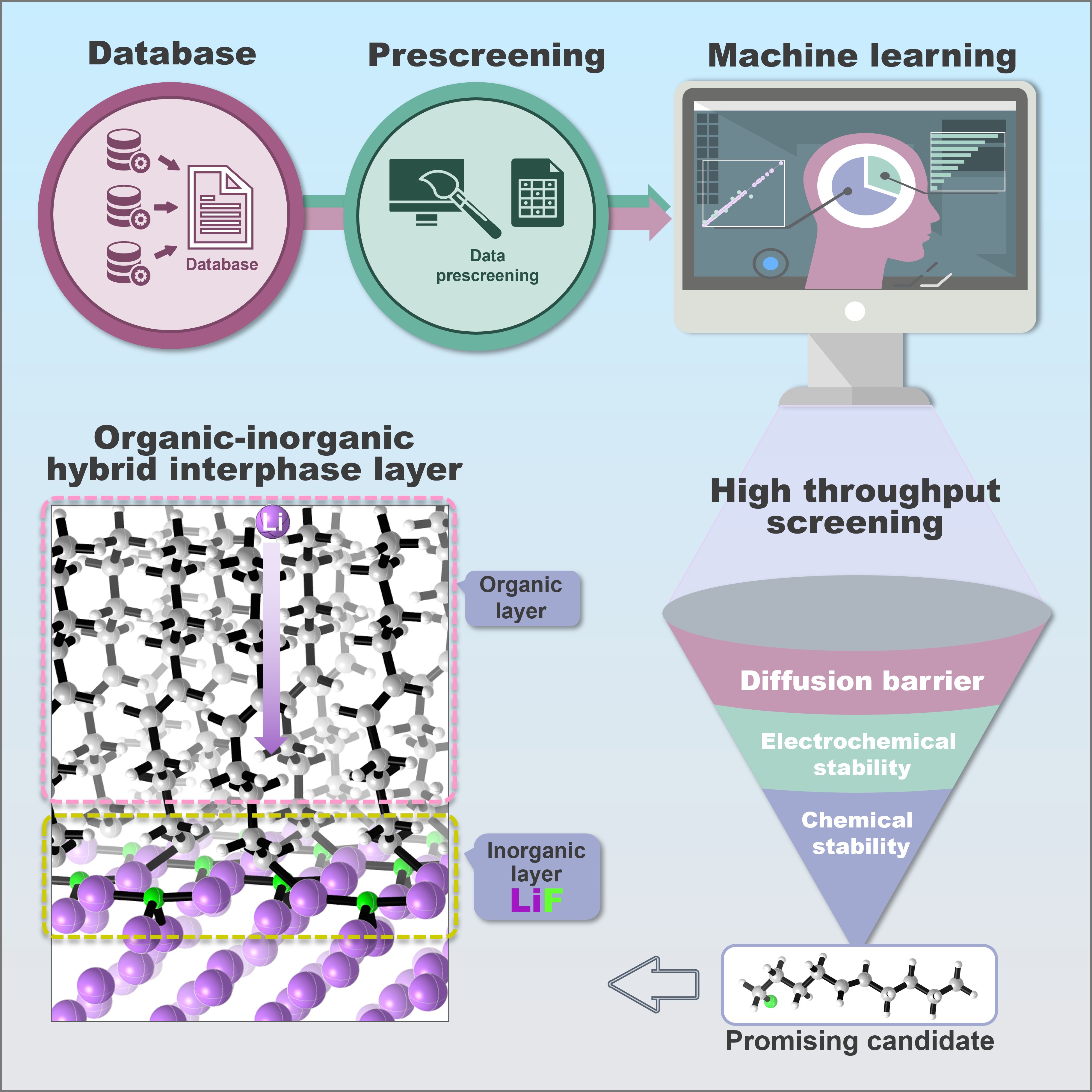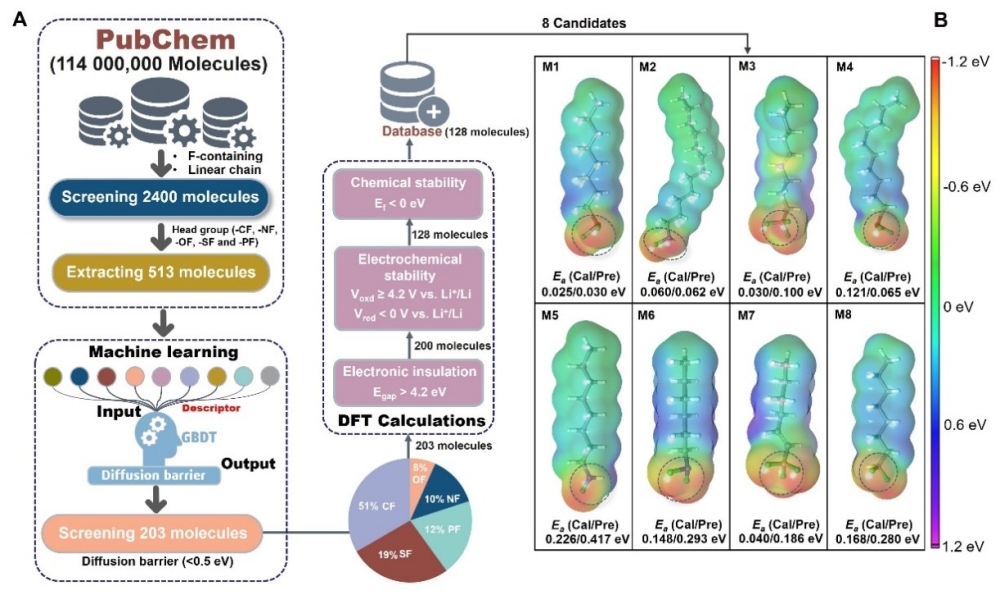Novel Strategy to Accelerate Design of High-Performance Lithium Metal Batteries
Date:26-07-2023 | 【Print】 【close】
Lithium metal batteries (LMBs) have attracted much attention for their exceptional performance in private electronics and electric vehicle applications. However, their widespread commercialization has faced significant challenges due to issues such as the growth of Li dendrites and undesirable side reactions with electrolytes during electrochemical cycling.
A research team led by Prof. XUE Dongfeng and Dr. PENG Chao from the Shenzhen Institute of Advanced Technology (SIAT) of the Chinese Academy of Sciences (CAS) has recently introduced a novel inorganic-organic hybrid interphase layer strategy by self-assembled monolayers technique utilizing self-assembled molecules endowing Li metal anode interface good mechanical stability and excellent ionic conductivity that induces Li uniform deposition and suppression of Li dendrite growth. More notably, the high-throughput data-driven workflow was applied to enable intelligent design of self-assembled molecules and accelerate the screening of the most promising candidate molecules directly from online PubChem database.
The results of this research have been published in Matter on 4th August 2023.
A key aspect of this study is the application of a high-throughput data-driven workflow involved the integration of density functional theory (DFT) and machine learning methods. Based on this principle, a workflow containing screening criterions of self-assembled molecule characteristics, electrochemical stability of molecules, chemical stability and ionic conductivity of interphase protection layer was built which can automatically capture targeted self-assembled molecules from the PubChem database. This new research paradigm highly accelerates the screening process for selecting the most promising candidate molecules, and allows that intelligently design the artificial interphase layer of Li metal anode by leveraging machine learning techniques.
Furthermore, the structure-performance relationship between the molecule structural characteristics (head group, tail group and middle group) as well as the electronic properties and the performance of the protection layer has been revealed by machine learning method, where the QM dipole and electrostatic potential of molecules were identified as significant descriptors to predict the energy barrier of Li diffusion through the hybrid protection layer.
Finally, a database consisting of 128 self-assembled organic molecule candidates selected from the PubChem database was built and eight best molecules were suggested to favor constructing the inorganic-organic hybrid interphase layer at Li metal anode. Those molecules with terminated fluoride head group (-F) allow to form LiF inner inorganic interphase that improves the stability and ionic conductivity of the interphase layer on the Li metal anode, while the outer linear organic layer provides enriched 3D porous channels that facilitate Li diffusion and guide Li uniform deposition and suppress Li dendrite growth.
"Our study opens up new possibilities for the development of more efficient and safer lithium metal batteries, bringing us a step closer to realizing the full potential of this revolutionary energy storage technology," said Dr. PENG, corresponding author of the study.

Figure 1. Scheme of the inorganic-organic hybrid interphase layer strategy by self-assembled monolayers method with the aid of machine learning to accelerate material design. (Image by SIAT)

Figure 2. An overview of the data-driven material discovery workflow that has been employed in the current work for the identification of useful organic molecules for LMBs. (Image by SIAT)

Figure 3. The intelligent screening and design for promising candidate organic molecules to self-assemble the inorganic-organic hybrid interphase layer enabling Li dendrite free metal anode. (Image by SIAT)
Media Contact:
ZHANG Xiaomin
Email:xm.zhang@siat.ac.cn